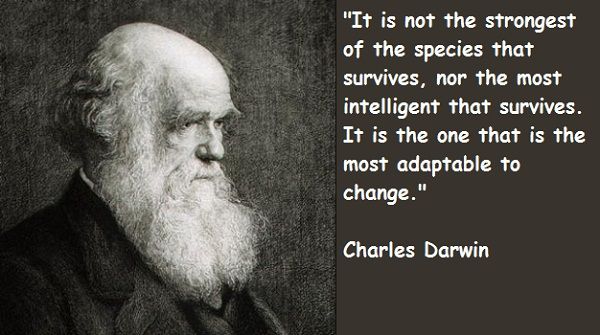PROFESSIONAL AND PERSONAL DEVELOPMENT: THE WORKER - PATRICK TOMLINSON (2016, Revised 2021)
Date added: 05/04/21
Download a Free PDF of this Article
PROFESSIONAL AND PERSONAL DEVELOPMENT: THE WORKER
PATRICK TOMLINSON (2016, Revised 2021)

Beginning
This article is especially relevant to those who work with traumatized children and young people, but also more widely. My 35 years or so of work in services for traumatized children has always had a focus on development. I think of this as broadly meaning growth, expansion, and advancement. Development means learning from experience. This can be exciting and also scary. It means change, leaving the familiar territory and going into the unknown. All of which we might understandably resist, but which are essential for evolution and survival. As Charles Darwin, is reported to have implied it is not the strongest that survive but those most responsive to change. It could be argued that in our fast-changing world, the ability to respond to change and adapt is increasingly important.
The article is about our development as a worker. What often gets referred to as professional development, but I think it is far more than that. I include workers at all levels who are involved with traumatized children. Carers, therapists, supervisors, managers, and directors, among others. I am focusing on the worker, simply because for me, my choice to work with traumatized children was my beginning.
 My first job was in 1985 as a residential care worker at the Cotswold Community, a therapeutic community for 'emotionally disturbed' boys. We lived and worked on a large farm site in Wiltshire, England. We had 40 boys resident in groups of 10 in 4 separate houses. The staff and their families lived in on-site accommodation. It was like a small village. The tranquility of the setting was in stark contrast to the primitive emotions and behaviour that were often part of daily life. To some extent, the environment was an essential calming antidote.
My first job was in 1985 as a residential care worker at the Cotswold Community, a therapeutic community for 'emotionally disturbed' boys. We lived and worked on a large farm site in Wiltshire, England. We had 40 boys resident in groups of 10 in 4 separate houses. The staff and their families lived in on-site accommodation. It was like a small village. The tranquility of the setting was in stark contrast to the primitive emotions and behaviour that were often part of daily life. To some extent, the environment was an essential calming antidote.
The official hours of work when I began were 7.30 am to 11 pm 5 days a week. One and a half days off each week. I had a Saturday afternoon after 1.30 pm off, and Wednesdays. On workdays getting off at 11 pm could easily turn into 1 am or later. At times we didn't get our time off, due to covering sickness or a crisis. Regular hours were 70 per week, at times up to 100. Going to work there was one of the best decisions I ever made. I am still thankful I was given the opportunity. In my case, the challenge was good for my development. However, during the time, I was there I did advocate for and achieve a shorter working week.
I was attracted to challenging work and to helping others. I believed this would also lead to personal change. I was motivated to change personally, and the professional task seemed perfectly suited. This possibility was confirmed by most people I talked with on my 3-day long visit, which was part of the staff selection process. The staff I met kept saying, this kind of work will test you, but if you can do it you will learn about yourself and grow as a person. I was already identified with work for disadvantaged children. However, I think the motivating factor had to do with personal change for me, and feeling this work might be a way to do it. Bruno Bettelheim (1966), one the most influential pioneers in the field of therapeutic work with children and young people, made it very clear that,
… to become a childcare worker means first and foremost to become oneself because only then can one become a self to others.
I think there are many jobs where we can learn all the time, but not so many which will lead to fundamental change as a person. The kind of occupations that push us to our limits are more likely to do this as long as we are not completely overwhelmed. Our formative experiences have a major influence on our adult personalities. Working 24/7 with children who keep probing to test who you are and what you are capable of, is another likely catalyst for change. Put the two together and there is huge growth potential, both professionally and personally. We find ourselves in a position where it is impossible to escape our vulnerabilities unless we have armor-coated skin. In such a situation, two options that don’t take long to surface are either – leave or stay and work through whatever is painful and difficult.
John Whitwell was the Principal of the Cotswold Community for the 14 years I worked there. He captured the centrality of change in a 2011 speech, celebrating the work of the Community,
The Cotswold Community has been a special place for a lot of people for a long time. Why is it special? ….. It seemed to me that the Cotswold Community supported change. Change for everybody in the place. Change not just for the boys that came here but change for all the grown-ups. That change was about gaining new insights into the work, but also about becoming more self-aware and also learning new skills. Skills whether they were therapeutic skills, or practical and creative skills as well.
 Bruno Bettleheim who was Director of the Orthogenic School in Chicago also wrote about this in his book 'Home for the Heart' (1974). The Orthogenic School was for children with significant difficulties, such as severe autism and childhood schizophrenia. I read parts of his book during my early days in the community. There were a few sections I found particularly interesting.
Bruno Bettleheim who was Director of the Orthogenic School in Chicago also wrote about this in his book 'Home for the Heart' (1974). The Orthogenic School was for children with significant difficulties, such as severe autism and childhood schizophrenia. I read parts of his book during my early days in the community. There were a few sections I found particularly interesting.
- The Total Involvement of the Staff Member
- Reintegration: The staff member against himself
- Personal Change and Professional Growth
- The Inward Journey
When I started writing this article, I didn’t anticipate referring to Bettleheim. However, I associate him with some of my first insights into the issue of development. So, maybe it is not surprising he has come to mind. Bettleheim's basic premise was this and it is as relevant now as it was then. We go into these extreme work environments because they will meet some of our own needs. We are not likely to be conscious of what those needs are, but we sense the work will be good for us. Sentimental notions of wanting to 'love' children or ‘help’ a deprived child, on their own will not be enough to sustain our efforts. Hence the well-known phrase 'Love is not Enough' (also the title of one of Bettleheim's books).
Many people who do not last long in the work, don’t leave because of the children’s attitudes towards them. They leave because of their strong reactions and hostile feelings toward the very children they previously felt so much concern for. The shock of discovering their reactions and feelings can be too much to bear. At times, I felt such strong feelings of anger, which I could not remember ever having felt before in my life. That does not mean that the feelings were not there but that they were deeply repressed. The emergence of what is repressed or unknown can be shocking. The children were experts at finding our ‘Achilles’ heel’ and ‘buttons to push’ that we didn’t even know we had. And unlike a process of therapy, the traumatized child wants to get to the bottom of the matter as quickly as possible. With little or no concern for our well-being, he or she may even need to discover how we manage such difficulty. As Bettleheim (1974) claimed,
It isn’t so much the patient’s actions or feelings against which the staff need to protect themselves, but mainly their own.
The children and young people I'm referring to are exceedingly difficult to help. They will often attack you, emotionally, verbally, and physically and reject everything you offer. They will also behave in a chaotic, unpredictable, bewildering, and sometimes dangerous manner. If all of that goes on consistently, for days, weeks, and even months it is challenging to the extreme. Thankfully, it doesn’t go on forever, though it can feel like it. These children need to push those who care and work with them to the limit. Only then and if you survive and carry on, without retaliation will they begin to trust and potentially heal. Learning to tolerate our feelings and reactions is sometimes the best we can do (Carpy, 1989). At least this is better than hurting the child, which may have been common in his or her history.
Integration-Disintegration-Reintegration – Bettleheim’s Premise
1st part - We go into these extreme work environments because it will meet some of our own needs. We are not likely to be conscious of what those needs are, but we sense the work will be good for us.
2nd part - of the premise - when we are faced with such consistent attack, rejection, and hostility, our defences, which were good enough to help us survive in ordinary circumstances, begin to disintegrate under this emotional and physical onslaught.
3rd Part - we feel extremely vulnerable, frightened, overwhelmed, and confused. Support is critical here. The worker may be in emotional turmoil, which is a normal reaction to a highly stressful situation. Those providing support need to have the confidence and experience so that they too don’t become anxiously reactive. Emotional disintegration can be catching as Lanyado (1989, p.140) explains,
Disintegration is catching – and the staff are prone to it too. At times staff may feel anxious that they too could collapse like a house of cards. This is an extreme situation – but I am sure there are few of us working in these settings who don’t feel this way at times. The child’s extreme anxieties can eventually threaten the integrity of their closest adults.
Any organization that provides foster or residential care or any other service to children who have complex trauma must meet this demand on the staff, with equally powerful support. If not, people are likely to feel overwhelmed and hurt. Not everyone will stay through it and some may suffer ill-health. Either staff or children will leave, or both. I think the same also applies to other related services. The support can be in different forms - training, supervision, mentoring, and consultancy, and directly in the work situation. Time and space to think about the work must be provided.
4th part - with defences disintegrating, we can begin to feel and see what’s underneath. This provides the potential for learning and growth. Why did a particular incident make us so upset? What might it have to do with our history? We begin to make connections, sometimes with events we have completely forgotten. What we remember of our childhoods is beginning to become more complex, but also more accessible. This ‘inward journey’ as Bettleheim called it could take many years, usually a minimum of 3.
5th part – re-integration. This is when the unintegrated parts of our personalities begin to become integrated. Interestingly, this concept of integration is now one of the main themes of trauma recovery work. Siegel (2006) states that,
The central idea of interpersonal neurobiology is that integration is at the heart of well-being.
With reintegration, our personality grows. Our narrative becomes more coherent and now includes experiences, sometimes painful, which we were not fully aware of. The unconscious and unintegrated past may have made itself known in ways outside of our control. Like an unpleasant repetition, we couldn’t stop. For example, a physical symptom or pattern of behaviour.
This process of integration does not end. It carries on, just as new experiences continue. But just as in the way the first 3 years of life are so influential on the rest of our development - the first 3 years of intensive work with severely traumatized children have a similar long-lasting influence. For some people, if they get that far, the 3-year cycle is enough. Change has happened, and it is time to move on. For others, different reasons for continuing can be found. Whatever route we take, our development is central to our well-being. I learned from Martin Willis (2001) during a training course related to strategic leadership and outcomes - the three key outcome areas for human well-being are safety, happiness, and development.
Development is important to all of us – for those who work with children who have complex trauma, it is a necessity. Bettleheim (1974, p.345) made the link between the process of change in the worker and those he works with.
Such re-integration around the patient seems to have a near miraculous effect. Actually, what is involved in the process makes understanding it quite readily comprehensible: the worker’s integration often induces a parallel process in the patient.
Though he uses the terms patient and worker, I think the same also applies in more familiar and less institutional settings, such as a foster home. There are many routes to development. I am not advocating that experiences like mine would be good for everyone, though they were for me. Those extremely challenging years laid a foundation that I continue to value, use, and build upon. And it was not all toil and turmoil! There were also many enjoyable times, wonderful, shared experiences, fun, and humour. The children had great character and are unforgettable people. I am glad to still be in touch with a few as adults, 25 or so years later.
The therapeutic community I joined had developed a congruent therapeutic model. The support that I was able to make use of was excellent. I had high-quality people around me - colleagues, managers, senior staff, and consultants. Maybe the culture also allowed their quality to develop and shine through? No one person created the culture, but we all, including the children, had the space to contribute. Without this, everything could easily have disintegrated into a complete mess. At times it felt like it was. Many children, whose lives were not destined for good outcomes did very well. Some didn't and the same could be said of the staff. There are probably many who have mostly negative memories. But many also have gone on in their work, to make achievements on the foundation of this experience.
The Inter-relatedness of Professional and Personal – Sincerity and Authenticity
In the final part of this article, I am going to focus on why the connection between personal and professional development is so important. We cannot overlook the central need for the professional development of all those who are involved in such challenging work. We might call it professional, but in a job that is so personal, there isn’t a neat way of separating the two. For example, if a carer is to be compassionate rather than punitive towards an ‘ungrateful’ child, she might first need to understand her resentment towards her parents who constantly told her she was ungrateful.
However, our need for development needs to be manageable within the context of the primary task – enabling traumatized children to recover. This may depend upon what we bring with us from our histories and how well we have integrated our experiences into who we are. Too much baggage might really be too much. Some baggage, like the ‘wounded healer’ might give us the motivation we need. There is a fine line here and it is one of the central struggles of the work. Bettleheim (1974, p.343) warns of the difficulty if we separate professional from personal development. While he is referring to workers in psychiatric hospitals the same applies to all work in the caring professions,
Professional development, no more than one important aspect of the worker’s striving for his own higher integration, can become a cancerous growth if it is pursued at the expense of his integration as a total person. While desire for professional growth, which is present among many workers in psychiatric hospitals, can serve as a momentum for personal integration; the crucial difference is whether it is only incidentally related to the actual work he is doing, or whether it is a direct result of a commitment to the ethos of the therapeutic milieu and to particular patients. Everything here depends on whether the institution is built around the conviction that it must do everything possible to promote such integration of the staff, with the patients’ integration as the ultimate goal.
There is a great risk of splitting between our professional and personal selves. Of course, there has to be a boundary between the two. But that is more about what we choose to share with those we work with. It is quite appropriate that some things are private. This does not mean that we are being two different people. Children who have suffered trauma, are likely to have unintegrated personalities (Winnicott, 1962) and may have developed a false rather than true self (Winnicott, 1960). It is important for the worker’s healthy development to integrate his experiences and to have a true, authentic sense of self. This is the essence of well-being. At the same time, it provides a model of a process that is vital for the children he works with. If the worker were not doing this integrative work, his work with children would be seriously undermined.
A true sense of self can also be seen as something sincere. There is not a mask with a superficial surface or false self hiding the true self. Traumatized children, and any child, find this difficult to deal with. Harold Searles (1965) has written about the immense importance of responding authentically to ‘being driven crazy’, i.e., when children are being exceedingly difficult. He argued that parental denial of strong feelings in front of the child, such as fury, is common in the aetiology of schizophrenia. For traumatized children, this problem is made worse as they are already often deeply mistrustful. They are used to people saying one thing and doing another. They cannot easily read whether something is genuine or not and they fear the worst.
Therefore, we make things as simple and transparent as possible when we are authentic. This does not mean acting out what we feel but acknowledging the reality of our feelings to ourselves. Once we are in touch with that, we are then more able to choose a helpful response for the child. Tom Main (1989) made an important point on this subject in his paper ‘The Ailment’. This is regarded as a classic paper on therapeutic community work and how particularly challenging ‘patients’ can create major difficulties and splits in the staff team, among other difficulties.
Believing that sincerity in management is a sine qua non for the treatment of the patients I have described, I offer one piece of advice. If at any time you are impelled to give advice to others (to be less hostile and more loving than they can truly be) don't.
 Main argued at length that sincerity amongst staff about what can and cannot be given with goodwill is the basis for the management of these patients. The same could be argued for a group of traumatized children. He believed that insincere goodness is useless and potentially disastrous for the continuance of treatment. We need to be completely genuine in our work. For instance, if senior managers are not finely tuned into the reality of the carers’ work, they will ask carers without much thought to try a bit harder, etc. The danger is then that the carers adopt a false caring persona, which is not genuine and cannot be trusted by the children who will see right through it. They will react to it causing even greater stress to the carers who will become demoralized. The carers need the opportunity to express their real feelings about the work, in supervision and other forums. If this helps to relieve the burden of feelings of anxiety and guilt that they are not up to the job, they will then be able to work more genuinely. They will be more able to accept their feelings, such as guilt and anxiety, as part of the work rather than an indication they are not working or trying hard enough (Barton, Gonzalez, and Tomlinson, 2011). Emphasizing the importance of this, the Department of Communities (2010, p.54) states,
Main argued at length that sincerity amongst staff about what can and cannot be given with goodwill is the basis for the management of these patients. The same could be argued for a group of traumatized children. He believed that insincere goodness is useless and potentially disastrous for the continuance of treatment. We need to be completely genuine in our work. For instance, if senior managers are not finely tuned into the reality of the carers’ work, they will ask carers without much thought to try a bit harder, etc. The danger is then that the carers adopt a false caring persona, which is not genuine and cannot be trusted by the children who will see right through it. They will react to it causing even greater stress to the carers who will become demoralized. The carers need the opportunity to express their real feelings about the work, in supervision and other forums. If this helps to relieve the burden of feelings of anxiety and guilt that they are not up to the job, they will then be able to work more genuinely. They will be more able to accept their feelings, such as guilt and anxiety, as part of the work rather than an indication they are not working or trying hard enough (Barton, Gonzalez, and Tomlinson, 2011). Emphasizing the importance of this, the Department of Communities (2010, p.54) states,
It has been stated that the most valuable tool residential care workers bring to their role is themselves.... It is the relationship that children and young people form with their workers that offers the potential for healing and moving forward with their lives feeling more positive about who they are in society and how they can live, participate, and contribute.
By doing this work the development of our professional and personal selves are continuously connected. It is not easy, but the more able we can recognize and be ourselves in our work the more helpful our relationships with the children are likely to be for them.
References
Barton, S., Gonzalez, R. and Tomlinson, P. (2011) Therapeutic Residential Care for Children and Young People: An Attachment and Trauma-informed Model for Practice, Jessica Kingsley Publishers
Bettelheim, B. (1966) Training the Child Care Worker in a Residential Treatment Centre, in, American Journal of Ortho-Psychiatry, 36
Bettleheim, B. (1974) A Home for the Heart, London: Thames and Hudson
Carpy, D.V. (1989) Tolerating the Countertransference: A Mutative Process, in, International Journal of Psychoanalysis, 70, (Pt 2), p.287-94
Department of Communities (Child Safety Services) in Partnership with PeakCare Queensland (2010) A Contemporary Model of Residential Care for Children and Young People, Queensland: Queensland: Government
Lanyado, M. (1989) “United We Stand”? Stress in Residential Work with Disturbed Children, in, Maladjustment and Therapeutic Education, Vol. 7, No. 3, p. 136-146
Main, T. (author) and Johns, J. (editor) (1989) The Ailment and Other Psychoanalytic Essays, London: Free Association Books
Searles, H.F. (1965) Collected Papers on Schizophrenia and Related Subjects, Hogarth Press: London
Siegel, D.J. (2006) Series Editor’s Foreword, in, Ogden, P., Minton, K. and Pain, C. Trauma and the Body, New York: Norton
Whitwell, J. (2011) Celebrating the Cotswold Community: July 9th, 2011
Willis, M. (2001) Outcomes in Social Care: Conceptual Confusion and Practical Impossibility? in Leadership for Social Care Outcomes Module Handbook 2005. University of Birmingham/ INLOGOV: England
Winnicott, D. W. (1960) Ego Distortion in Terms of True and False Self, in Winnicott, D.W. (1965) The Maturational Processes and the Facilitating Environment, London: Hogarth Press
Winnicott, D.W. (1962) Ego Integration in Child Development, in, The Maturational Process and the Facilitating Environment, Hogarth Press and the Institute of Psychoanalysis: London (1972)
Files
Please leave a comment
Next Steps - If you have a question please use the button below. If you would like to find out more
or discuss a particular requirement with Patrick, please book a free exploratory meeting
Ask a question or
Book a free meeting













